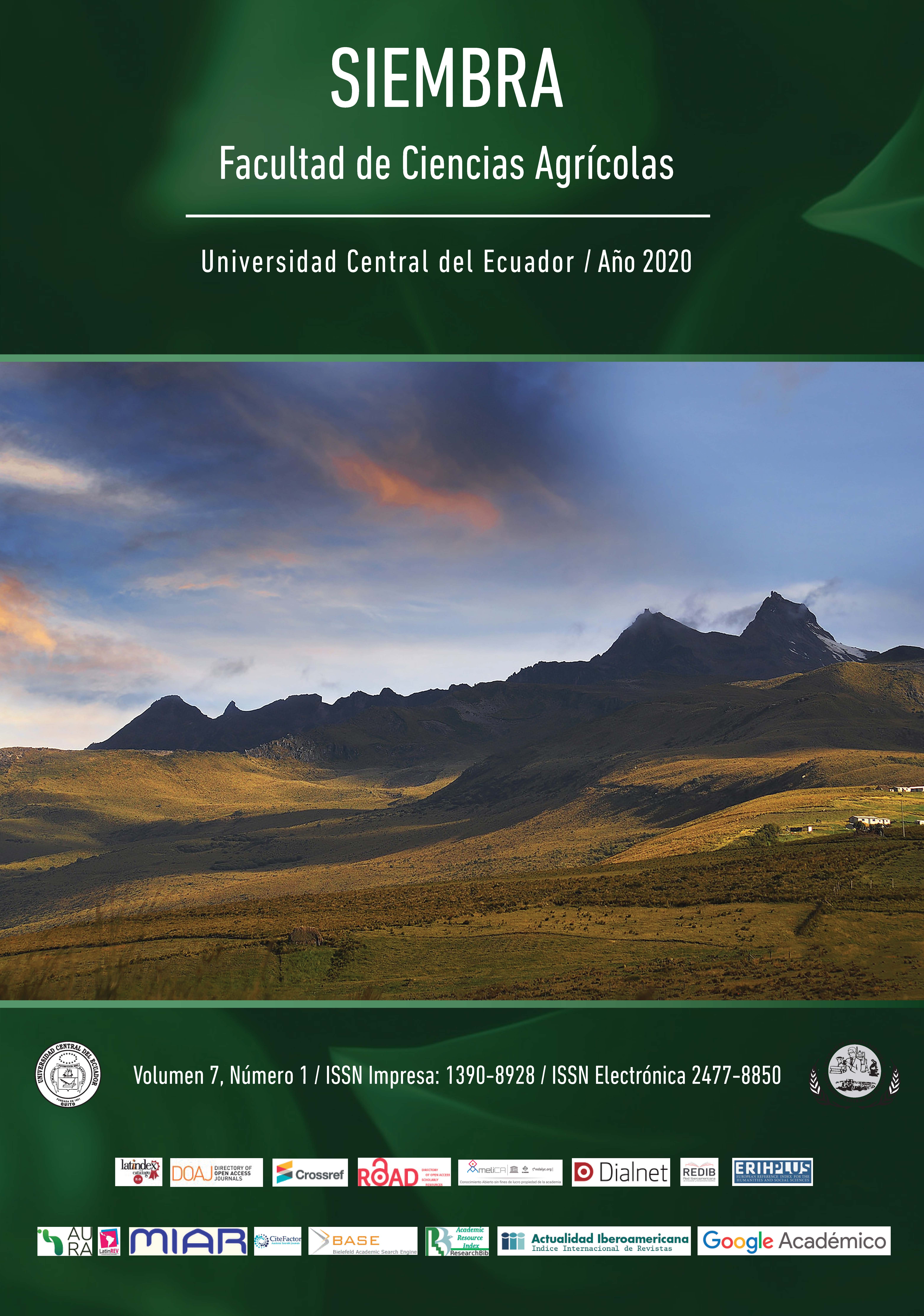Assessment of ancient techniques of natural dyeing in the provinces of Loja and Azuay in the south of Ecuador
Main Article Content
Abstract
The aim of this study was to revalue the ancient techniques of natural dyeing and to contribute to the viability of this important intangible cultural heritage. In order to achieve this goal, the places where currently natural dyeing are still practiced were identified, it was determined some of the plant species that are commonly used: Lomatia irsuta (Garau), Juglans neotropica (walnut), Alnus glutinosa (Alder), Brachyotum confertum (Killuyuyo) ), Usnea sp. (Old man's beard), Bidens pilosa (Shirán) and the animal species Dactylopius coccus (Cochineal) from which the cochineal dye is extracted. The techniques were recovered and optimized based on factors such as temperature, time, pH, mordant class and amount of vegetable. 21 treatments were performed grounded on the methodology of the artisans and 50 treatments with variation of the most influential factors. The dyes were applied to alpaca fiber and sheep wool. 71 shades were obtained, ranging from intense yellow to pink, flesh, orange, and dark brown. They were classified as interesting tones due to the apparent intensity they presented, to those obtained from the application of the dye extracted from Brachyotum confertum, Neotropical Jungles and Dactylopius coccus. Control tests such as the strength of color to light, manual washing and rubbing showed that the dyeing with most of the species used had satisfactory results according to the grayscale assessment to measure the color change.
Downloads
Metrics
Article Details

This work is licensed under a Creative Commons Attribution-NonCommercial 4.0 International License.
The authors who publish in Siembra know and accept the following conditions:
- Authors retain the copyright and grant Siembra the right of first publication of the work, under the Creative Commons Attribution License. Third parties are allowed to use what has been published as long as they refer to the author or authors of the work and its publication in this journal.
![]() This content is licensed under a Creative Commons Attribution-Noncommercial 4.0 International (CC BY-NC 4.0).
This content is licensed under a Creative Commons Attribution-Noncommercial 4.0 International (CC BY-NC 4.0).
- Authors maintain the copyright and guarantee Siembra the right to publish the manuscript through the channels it considers appropriate.
- Authors may establish on their own additional agreements for the non-exclusive distribution of the version of the work published in Siembra, acknowledging their initial publication in the same, such as in institutional repositories.
- Authors are authorized to disseminate their work electronically once the manuscript is accepted for publication.
References
Alonso, F. (2015). Manual de control de calidad en productos textiles y afines. Madrid: Universidad Politécnica de Madrid.
Gálvez, F. (1999). Un aporte más al diseño industrial. Normatividad en textiles para tapicería de mobiliario. México: Universidad Nacional Autónoma de México.
Garzón, G. (2008). Las antocianinas como colorantes naturales y compuestos bioactivos: Revisión. Acta Biológica Colombiana, 13(3), 27-36.
Guirola, C. (2010). Tintes naturales y su uso en Mesoamérica desde la época prehispánica. Guatemala: Asociación Flaar Mesoamérica.
Jaramillo, H. (1988). Textiles y tintes (1a ed.). Cuenca: Centro Interamericano de Artesanías y Artes Populares (CIDAP).
Marrone, L. (2010). Tintes naturales al alcance de nuestras manos. Guía práctica para el teñido de lanas con colorantes naturales. Argentina: Editorial Martin.
Mattenet, F., Goyheneix, M., & Peri, P. (2016). Tintes naturales de plantas nativas: colores de la Patagonia (1a ed.). Santa Cruz: Secretaria de Agricultura Familiar Santa Cruz.
Mejía-Azcarate, F. (2015). Programa de textilización. Una herramienta completa y didáctica para poder entender el complejo mundo de la fabricación textil (6a ed.). Recuperado de: https://programadetextilizacion.blogspot.com/
Pazos, S. (2017). Teñido en base a tintes naturales: Conocimiento y técnicas ancestrales de artistas textiles de Perú y Bolivia (1a ed.). Perú: Practical Action.
Stramigioli, C. (1991). Teñido con colorantes naturales. Recuperación de una técnica tradicional. Argentina: Ediciones Ayllu.





